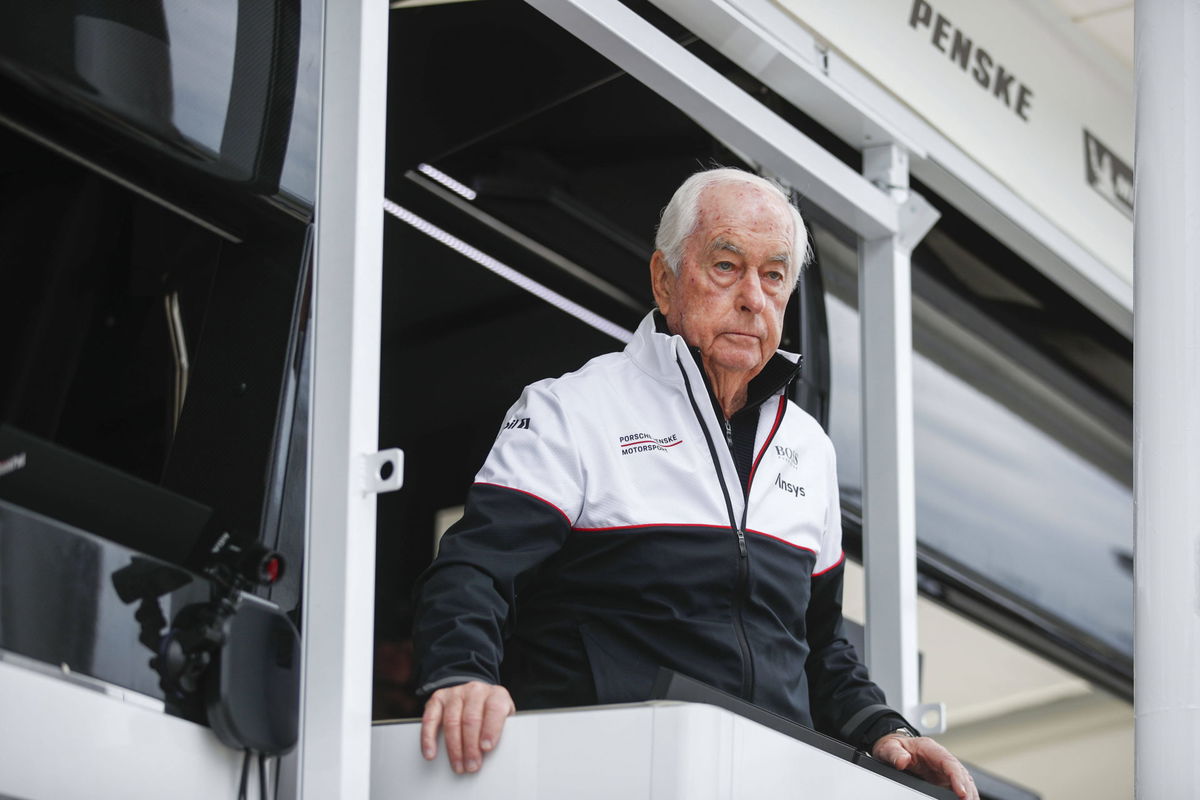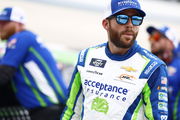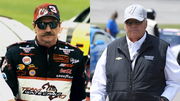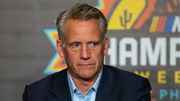
Imago
Roger Penske Gründer und Vorsitzender der Penske Corporation Daytona United States of America *** Roger Penske Founder and Chairman of Penske Corporation Daytona United States of America

Imago
Roger Penske Gründer und Vorsitzender der Penske Corporation Daytona United States of America *** Roger Penske Founder and Chairman of Penske Corporation Daytona United States of America
For Roger Penske, Indianapolis isn’t just a racetrack; it is an empire built on winning. The legendary figure behind Team Penske has long ruled the world of open-wheel racing since the acquisition of Indianapolis Motor Speedway and IndyCar in 2020. With 20 Indy 500 victories to his credit through his teams and 17 IndyCar championships, Penske’s precision, innovation, and unmatched professionalism have made the Speedway synonymous with excellence in motorsports. That legacy, rooted in his mantra of treating each year “like it’s the first time,” sets the stage for a partnership built on respect and long-term vision.
Watch What’s Trending Now!
IndyCar’s television journey spans decades, from early coverage on ABC and ESPN to a long run with NBC and NBCSN from 2014 through the 2024 season, including streaming via Peacock. But when NBC left, Fox didn’t just step in; it remade the broadcast playbook. In June 2024, the open-wheel series inked a landmark deal with Fox Sports, making 2025 its debut season on the network. All 17 races, plus every qualifying and practice session, now air on Fox with supplemental content on FS1 and FS2. From slick Super Bowl promos to drone coverage and a “GhostCar” qualifying overlay, Fox made it clear its goal wasn’t just to broadcast, it was to elevate IndyCar’s presentation on every front. And now, Fox is betting even bigger, deepening its ties with The Captain itself.
ADVERTISEMENT
A new era for the Indy 500 and its global audience
As informed by Sports Business Journal‘s Adam Stern, Fox Corp. has taken a major step into the heart of American open-wheel racing by acquiring a one-third stake in Penske Entertainment, the present company of the IndyCar Series and IMS. The announcement marked a landmark moment in motorsports media history. While the terms of the transaction were not disclosed, sources placed Fox’s investment in the range of $125 million to $135 million. Penske Entertainment sits within Roger Penske’s expansive transportation empire, Penske Corp., which oversees a vast portfolio from trucking and logistics to the crown jewel of American racing. So, what does this transaction mean for both parties?
As part of the agreement, Fox has also extended its media rights deal to broadcast IndyCar races for several additional years. This year marks Fox’s first as the exclusive television home of the series, and the early results have been impressive. Fox’s debut season saw viewers soar, as the Indianapolis 500 averaged 7.05 million, up roughly 40-41% over NBC’s 5.34 million in 2024. Across the first eight races of 2025, Fox averaged 2.007 million viewers per race, a 27% year-over-year increase compared to NBC’s 2024 average. Even the opener at St. Petersburg pulled 1.417 million viewers, a 45% increase over NBC’s 974,700 for the same race in 2024. This move reflects a growing trend in the sports industry, where media companies are no longer content to act solely as rights holders but rather as strategic investors and partners.
That approach has been evident across the sports landscape. Fox already has investments in other leagues, including a partnership with the Big Ten Conference via the Big Ten Network and ownership in the United Football League. “We’re not looking to be a private-equity fund that has dollars that need to be put to work,” said Fox Sports Chief Executive Eric Shanks, noting that while the company will remain open to new opportunities, the focus is on aligning with the right properties at the right time. Fox Corp. and the Wall Street Journal‘s parent company, News Corp, share common ownership, highlighting how cross-media relationships can amplify the reach and impact of such alliances.
ADVERTISEMENT
💥@FoxSports is buying one-third of @IndyCar for around $125 million to $135 million and extending their media rights deal. – @WSJ https://t.co/k2h4Sr4eGL
— Adam Stern (@A_S12) July 31, 2025
Other media giants are also deepening ties with motorsport. Media organizations are stepping into NASCAR’s ownership structures. From 2025 through 2031, NASCAR’s landmark media-rights deal, valued at roughly $1.1 billion annually, has four major partners: Fox Sports, NBC Sports, Amazon Prime Video, and TNT Sports. Notably, Amazon and TNT are not merely broadcast partners; they have also integrated broadcast talent and begun co-developing related events such as Amazon’s $1 million In-Season Tournament. This signals a shift toward media entities partnering at a deeper operational level within NASCAR’s framework.
ADVERTISEMENT
For Roger Penske, however, this was not a capital-raising exercise. The motorsports titan explained that IndyCar “wasn’t looking for capital” when Fox first approached him earlier this year about expanding their relationship beyond media rights. What swayed him was Fox’s track record during its debut season. “I was impressed with Fox’s 30% year-over-year improvement in viewership through the first six races of this season and 7.1 million viewers for the Indy 500, a 41% jump over last year. It was a pretty easy question to say yes to,” said Penske. Shanks, a lifelong racing aficionado, called the move “a case of finding the right partners at the right moment” and emphasized that Fox sees the enormous growth potential for the series. “The blueprint is there. We know what this sport can be,” he said, adding that Fox will now work with Penske on new events, expanded sponsorship opportunities, and strategies to boost attendance at tracks nationwide.
Top Stories
Ross Chastain Labels NASCAR Driver “The Most Punchable Face” to Excuse Himself Over Punchgate Controversy

Jimmie Johnson Poaches Richard Childress’ Key Ally Ahead of NASCAR 2026 Season

When Rick Hendrick Walked Away From $1,000 to Avoid Dale Earnhardt Sr’s Wrath

NASCAR’s Next Big Villain Named as Denny Hamlin Enters Fans’ Good Books

Commissioner Steve Phelps Quits NASCAR Days After Getting Exposed in Lawsuit Trial

Denny Hamlin voices out frustration over Roger Penske’s track race management.
Hamlin‘s Brickyard weekend nearly fell apart before it began when his #11 Toyota snapped loose in qualifying, clipped the wall, and slammed the inside barrier, forcing him to start 39th in a backup car. Against the odds, the three-time Daytona 500 winner clawed through the field for a third-place finish, carefully reading the race like a chessboard. “After where we started, I was content with our finish,” Hamlin said. “Usually you won’t give up a row when you’re that close to the front, but I just felt in my heart of hearts, regardless of what the number said, if there’s trouble, they’re going to be going up the racetrack, not down.”
ADVERTISEMENT
Post-race, Hamlin didn’t shy away from criticizing race management at Indianapolis under Roger Penske’s watch. He questioned the extended caution laps after a red flag, calling them costly to contenders like William Byron. “Yeah, I was actually surprised that after the red flag, we ran out of caution a lot… And I’m like, what do we do? If the track… If it was deemed okay to start this thing and put us under caution, like be ready. Quicky caution. choose green. But it was like caution, caution, pit, choose green.” Hamlin argued, “If they didn’t run that extra pace lap, 24 probably makes it.”
The veteran also voiced frustration with Indy’s upper groove, suggesting its design hampered passing opportunities. “If you visually look at it, it doesn’t look much different than the bottom lane,” he said. “But there’s something so off when you’re up there. I can’t even explain how off it is. It’s just really bad.” His remarks added fuel to the ongoing debate about potential changes to the Brickyard’s racing lines and banking.
ADVERTISEMENT
ADVERTISEMENT
ADVERTISEMENT
ADVERTISEMENT

